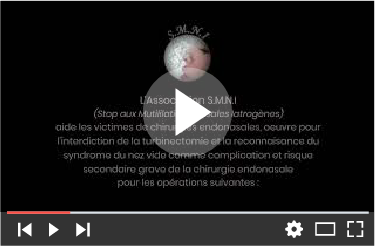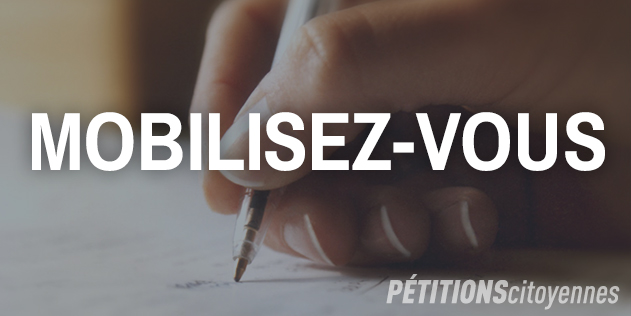Synthèse août 2016 - Dr S. Das : "US Institute for Advanced Sinus Care and Research"
Texte anglais en fin d'article.
Danger de l'alloderme / Conférence SNV Septembre 2016 (Traduction française)
"US Institute for Advanced Sinus Care and Research " Bilan / Août 2016
"Chère communauté du Syndrome du Nez Vide,
Voici-joint une mise à jour de nos efforts pour la prévention et le traitement de l' ENS.Nous sommes heureux d'annoncer aux patients ENS que nous disposons d'un nouveau traitement expérimental PRP / Acell / A et que nous allons commencer à offrir des implants imprégnés de Derived Stem cellulaire afin de compenser une perte importante de volume de cornets.(Voir ci-dessous pour plus de détails).
1. Quelles thérapies sont actuellement offertes pour le traitement de l'ENS ?
À compter du 1er Août 2016, notre institut commencera à offrir 3 types de thérapies pour l'ENS :
La première est l'utilisation d'injections PRP / ACELL pour les patients présentant un dysfonctionnement turbinate après chirurgie sans perte de volume important.
Nous avons traité ainsi plus de 250 patients ENS avec ce traitement,qui ont eu un taux d'amélioration supérieur à 75%.(Les prix restent de 1985 $ pour la première injection et consultation et de 1635 $ pour les injections suivantes).
Nous sommes également satisfaits de nos efforts initiaux avec cette thérapie, utilisant des cellules souches PRP / Acell / A , dérivés récoltés à partir d'une liposuccion des patients.
Nous continuerons à offrir ce traitement comme alternative à nos injections traditionnelles PRP / ACELL. Nous avons traité 20 patients avec ce traitement sans constater aucun effet secondaire indésirable .
Nous prévoyons avec ces injections , un taux de réussite similaire ou supérieur à nos injections PRP / traditionnelles ACELL. (Les prix de ce traitement seront $ 2850 pour la première injection et 2500 $ pour les injections suivantes).
Nous envisagerons également d'offrir des implants aux patients ayant une perte importante de volume. Au lieu d'utiliser de l'Alloderm,matériau qui ne me plaît pas, avec un taux de rejet d'environ 20% lorsqu'il est utilisé dans la hernie et la reconstruction mammaire, nous utiliserons plutôt un nouveau matériau connu sous le nom Biodesign de Cook Medical, Inc. Le «Biodesign» est similaire au l'«Acell», produit à partir de feuilles de la matrice extracellulaire porcine et des études ont démontré que les nouveaux vaisseaux sanguins et les nerfs sont capables de se développer dans le matériau.
Ces implants seront imprégnés avec des cellules souches PRP / Acell /et A,dérivés récoltés à partir d'une liposuccion ou chirurgie abdominale.(Les prix pour ce traitement seront 7635 $). Nous avons essayer d''obtenir une couverture d' assurance pour ce traitement.Malheureusement, comme il est expérimental: ce traitement ne sera pas couvert .
2. Pourquoi offrir à nouveau ,aux patients ENS une chirurgie d'implant ?
Pendant de nombreuses années, j'avais essayé des implants Alloderm pour la reconstruction du volume avec des résultats mitigés.
Pour certains, l'Alloderm a aidé, mais environ 25% des implants d'Alloderm s'extrudaient au fil du temps et induisaient une réaction inflammatoire de corps étranger nuisible pouvant provoquer des cicatrices. Des résultats similaires ont été signalés dans d'autres régions du corps où l'Alloderm a été utilisé. En fait, il y a un recours collectif contre Alloderm (www.schmidtlaw.com/alloderm-
Il y a plus de 300 poursuites contre Alloderm utiliser dans l'état de New Jersey seul. Beaucoup de mes collègues qui utilisent Alloderm ont rapporté sur la nécessité d'effectuer une autre opération et retirer le Alloderm dans un petit groupe de patients.
En conséquence, j'ai préféré ne pas courir le risque d'utiliser l' Alloderm en continuant à l'offrir comme un matériau d'implant, cherchant une alternative plus appropriée. Récemment, Cook Medical ,en parlant avec leurs représentants, a rapporté que leur nouveau matériau appelé Biodesign, a été créé de manière très similaire au matériau utilisé dans Acell.
Biodesign a plusieurs avantages à mon avis par rapport à Alloderm. Tout d'abord, il est non-réticulé, ce qui permet aux vaisseaux sanguins capacité plus faciles à cultiver dans le tissu. Les greffes biologiques réticulés tels que Alloderm inhibent la croissance interne vasculaire et ont été associés à l'inflammation chronique et l'encapsulation.(Novitsky, et al La biologie des produits biologiques: la science fondamentale et concepts cliniques Plast Reconstr Surg 2012; 130 (5) 9s-17s.).
D'autre part, il ne contient pas de quantités significatives d'élastine significatives, qui interfèrent avec la capacité du corps à organiser et le dépôt de collagène. En conséquence, je pense que c'est un matériau beaucoup plus sûr que Alloderm avec moins d'extrusion et de moins d'inflammation chronique. En outre, en déposant directement les cellules souches dérivées de tissu adipeux dans la matière, j'espère qu'il agira comme un échafaudage pour permettre une nouvelle régénération tissulaire de se produire dans le cornet.
3. Y a -t-il des avancées sur la reconnaissance de l'ENS ?
Important, à retenir :
En septembre, le Dr Steven Houser organise une conférence téléphonique et réunion sur la sensibilisation de l'ENS. ouverte à tous les orls pratiquants qui aura pour objet
dans un premier temps, de travailler sur le développement potentiel d'un code de diagnostic pour cette maladie.
«Aussi, j'ai été nommé à un groupe de travail de deux personnes,afin d'élaborer des recommandations d'un comité d'action politique de la rhinologie American Society. Nous 'espérons que ce comité sera être proactif en aidant à éliminer l'ENS.
4. Quels changements et progrès concernant l'essai clinique pour l'ENS?
Le Dr. Jayakar Nayak et ses collègues de l'Université de Stanford ont mis au point, un questionnaire spécifique à la maladie connue sous le nom validé ENS6Q pour suivre l'évolution des patients atteints de l'ENS. Ce travail a remporté le prix de la science clinique à 2016 Réunion de printemps de l'ARS
.
Ce sera un outil très précieux pour suivre les patients atteints de l'ENS et comparer les protocoles de traitement de différents médecins à travers le pays. Nous commencerons à appliquer l'utilisation du ENS6Q le 1 Janvier, 2017 pour tous nos patients ENS.
C'est tout pour l'instant."
Meilleurs voeux, Shu Das.
/image%2F2113483%2F20170812%2Fob_73e097_logo2blanc2.png)
/https%3A%2F%2F45ijagbx6du4albwj3e23cj1-wpengine.netdna-ssl.com%2Fwp-content%2Fuploads%2Ftsf-awards-retina-2016.png)


/https%3A%2F%2Fcdn.shop-pharmacie.fr%2Fimages%2F336x0%2Fhyarhinol-spray-nasal-a-base-de-hyaluronate-de-sodium-spray-nasal-F00004817-p10.jpg)
/https%3A%2F%2Fassets.over-blog.com%2Ft%2Fcedistic%2Fcamera.png)
/https%3A%2F%2Fstatic.wixstatic.com%2Fmedia%2Fb575f7_51ab46f789d04e12b0eb9597fa51c472~mv2.png%2Fv1%2Ffit%2Fw_797%2Ch_455%2Cal_c%2Ffile.png)
/https%3A%2F%2Fbase-donnees-publique.medicaments.gouv.fr%2Fimg%2FLogo_CNAM.png)







